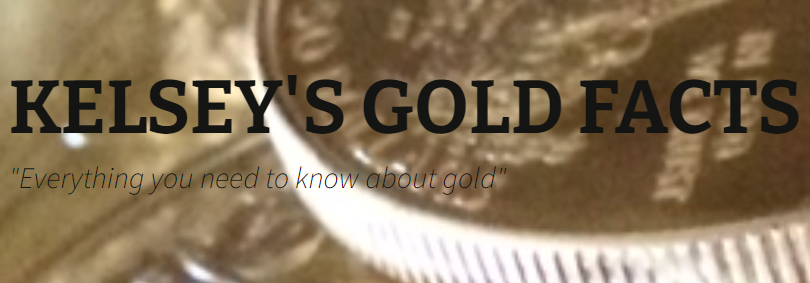Viewing gold in its proper context seems to be difficult for most gold bugs. The excitement associated with the anticipation of gold at $3000, $10,000, or higher tends to override real fundamentals and common sense.
Not a few of the predictions for a new, higher gold price are just wild guesses. Some of the reasons given to support those guesses include a Fed pivot and reduction in interest rates, geopolitical concerns, a recession and weak economic activity, and a collapse in the U.S. dollar. There are others, but for now, lets look at these.
GOLD AND INTEREST RATES
Financial writers in the media continue to refer to “gold’s correlation with interest rates”. The theory is that higher interest rates are negative for gold (the gold price) because gold doesn’t pay interest. Hence, investors tend to shun gold when interest rates are rising and look elsewhere for a higher return.
Time and again, the following statement or something similar finds its way into gold commentary:
“…prospects of higher US interest rates have the ability to limit upside gains. It must be kept in mind that Gold is a zero-yielding asset that tends to lose its allure in a high-interest rate environment”
A variation of that statement:
“Because gold doesn’t bear interest, it struggles to compete when interest rates rise.”
The statements imply a correlation between gold and interest rates. The implied correlation suggests that higher interest rates result in lower gold prices, however…
Between 1970 and 1980, the price of gold increased from $35.00 per ounce to $850.00 per ounce. Rather than declining, though, interest rates were rapidly rising.
Gold galloped ahead in the face of ever higher interest rates and increasing lack of demand for higher-yielding investments including U.S. Treasury Bonds. The 10-year U.S. Treasury bond yield exceeded 15%!!! This contrasts markedly from what happened thirty years later.
During the ten-year period 2001-2011, the price of gold increased from $275.00 per ounce to a high of almost $1900.00 per ounce. Yet, interest rates, which had been declining since the 1980s, continued their descent (helped along by the Fed, of course).
Two ten-year periods of outsized gains in the price of gold while interest rates were doing something exactly opposite during each period. There is no correlation between gold and interest rates.
GOLD AND GEOPOLITICAL CONCERNS
Any apparent effects from geopolitical issues are temporary at best, and there is no reason to expect them to have any measurable or lasting impact on the gold price unless the U.S. dollar is affected negatively.
(See my article The Gold Price And Geopolitical Concerns for examples; i.e., Russia vs. Ukraine, Israel vs. Hamas, The War with Iraq, etc.).
GOLD AND RECESSION FEARS
A recession is a period of weak economic activity. Even a severe recession will not have an appreciable effect on the gold price.
If the recession deepens and economic activity declines severely, the result could be a full-scale depression.
In most cases, events of this nature are accompanied by deflation. Deflation is the opposite of inflation and results in a stronger currency (USD) which gains in purchasing power.
The gain in purchasing power means you can buy more with your dollars – not less. The downside is that there are fewer dollars to go around. There would be a huge price collapses in prices for all assets, investments, goods and services. The gold price would be similarly affected.
GOLD AND DOLLAR COLLAPSE
There are expectations by some for a complete collapse in the U.S. dollar resulting in hyperinflation; similar to Germany in the 1920s, Zimbabwe, or Venezuela.
That is possible, but it is unlikely. A credit collapse and deflation are more likely since the Federal Reserve fuels inflation with cheap credit. A credit collapse would trigger huge price declines in all assets, including gold. The most likely result would be a full-scale depression that could last for years.
Even if the U.S. dollar were to collapse, the price of gold in dollars would be meaningless.
VIEWING GOLD IN ITS PROPER CONTEXT
Gold is real money and a long-term store of value. It is also original money. Gold was money before the U.S. dollar and all paper currencies; and, all paper currencies are substitutes for gold, i.e., real money.
The higher price of gold over time reflects the ongoing loss of purchasing power in the U.S. dollar. In other words, the price of gold tells us nothing about gold.
The gold price tells us only what has happened to the U.S. dollar. The same thing is true if gold is priced in any other fiat currency.
Over the past century, the dollar has lost ninety-nine percent of its purchasing power. This means that it costs one hundred times more for the things you buy today than it would absent the effects of inflation.
The original fixed price of gold was $20.67 oz. Convertibility allowed exchange of $20.00 in paper money for one ounce of gold and vice versa.
At $2000 oz., gold is one hundred times higher and reflects the actual ninety-nine percent loss of USD purchasing power.
The gold price only moves higher to reflect the dollar’s loss of purchasing power after the fact; never before.
Expectations for a much higher gold price based on anything other than the loss of U.S. dollar purchasing power will not be realized.
A much higher gold price can only present itself after further, significant loss of U.S. dollar purchasing power.


